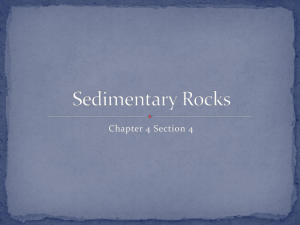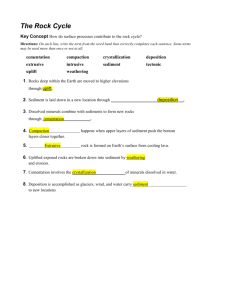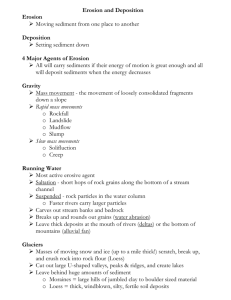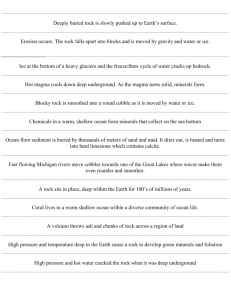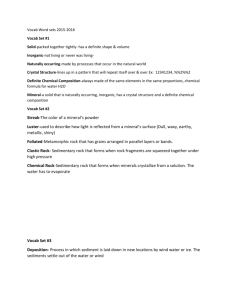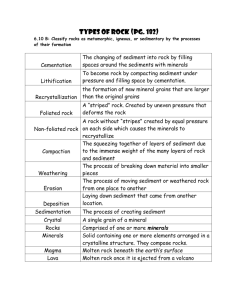Organizing Sedimentary Rocks
advertisement
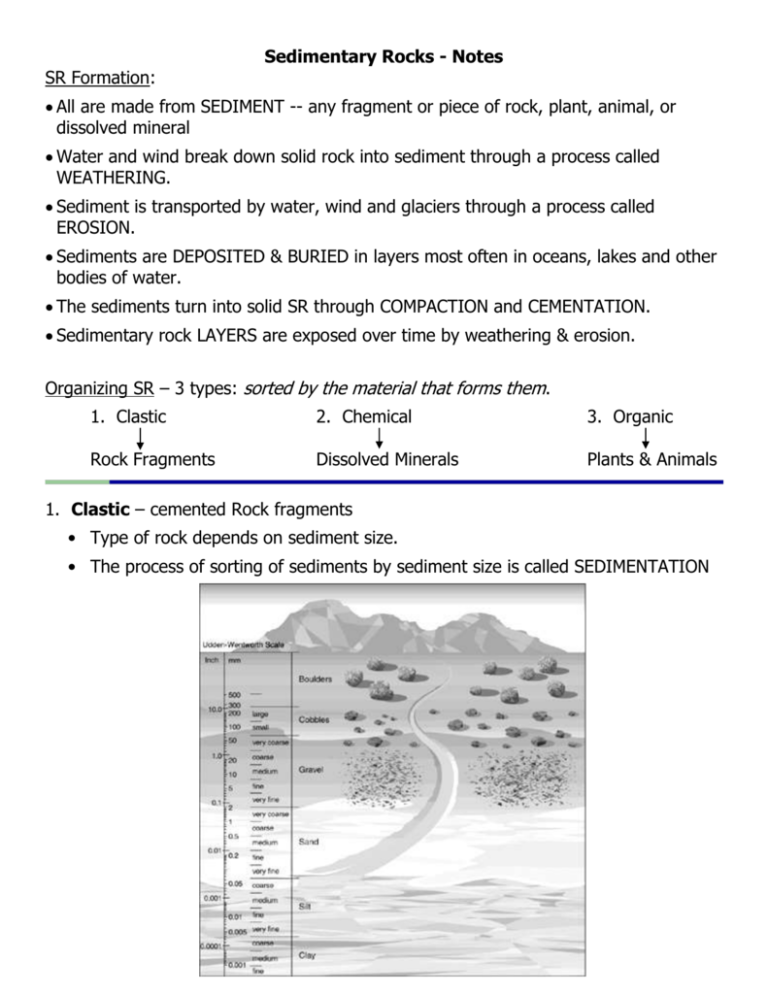
SR Formation: Sedimentary Rocks - Notes All are made from SEDIMENT -- any fragment or piece of rock, plant, animal, or dissolved mineral Water and wind break down solid rock into sediment through a process called WEATHERING. Sediment is transported by water, wind and glaciers through a process called EROSION. Sediments are DEPOSITED & BURIED in layers most often in oceans, lakes and other bodies of water. The sediments turn into solid SR through COMPACTION and CEMENTATION. Sedimentary rock LAYERS are exposed over time by weathering & erosion. Organizing SR – 3 types: sorted by the material that forms them. 1. Clastic 2. Chemical 3. Organic Rock Fragments Dissolved Minerals Plants & Animals 1. Clastic – cemented Rock fragments • Type of rock depends on sediment size. • The process of sorting of sediments by sediment size is called SEDIMENTATION SEDIMENTATION – sorting of sediments by size 2. Chemical Minerals dissolved in water are precipitated, when the water becomes oversaturated with minerals. Ex: Calcite (CaCO3) Limestone (Chemical) – The stalactites and stalagmites you see in caves form this way Minerals dissolved in water are deposited when the water evaporates away. Ex: Halite & Gypsum Rock Salt & Rock Gypsum – Shallow seas in arid climates evaporate quickly leaving behind minerals 3. Organic Shells from ocean dwellers build up on the ocean floor. Ex: Calcite (CaCO3) Limestone (Organic) Dead plant material builds up in swamps. Ex: Peat Coal Special SR Characteristics: Strata – layers Ripple marks – sand pattern formed by water Mudcracks – muddy puddle that dried up and cracked Fossils – the remains or impression of a plant or animal; only found in SR! Geodes – round, hollow SR with minerals trapped inside

